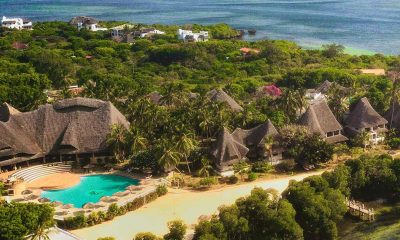News
Dive Club Trip Report – Oyster Diving Club – Part 2
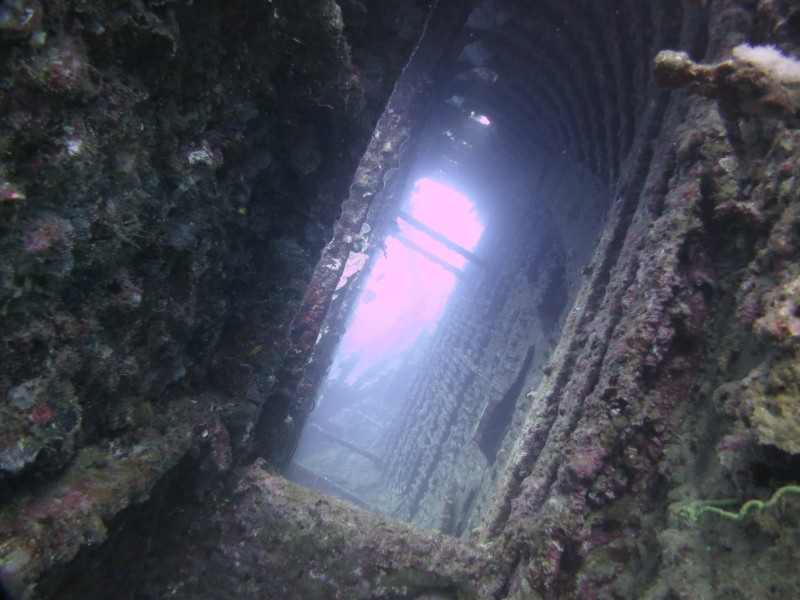
OYSTER DIVING CLUB – BEST OF WRECKS RED SEA LIVEABOARD, OCTOBER 2014 – PART 2
(Read Part 1 here.)
Day 3
Overnight we made the 11 hour crossing from the Brothers to the Northern part of the Red Sea. A welcome lie in until 6am was received by many. There were a few less hangovers today.
Our first dive was on the Rosalie Moller, a fairly recently discovered wreck. Sitting upright on the sea bed, the top of the wreck is approximately 32m with the bottom somewhere around 50m.
Rosalie Moller Facts:
Launched in Glasgow in 1910 and was then named the Francis. At 110m the Rosalie Moller is larger than a football field and is 16m wide. In 1931 it was sold to the Royal Navy and changed its name to the Rosalie Moller. During WWII it served as a supply ship, supplying coal to the British Army. In 1940 it was ordered to anchor up as the Suez Canal was blocked due to a couple of broken wrecks. It was discovered by a German Heinkel Bomber who landed a direct hit on the main deck.
Having never dived this wreck I was really looking forward to it, as it is often described as one of the best wrecks in the Red Sea.
As we descended down the shot line the vis was a meagre 15m or so. The Rosalie Moller emerged slowly out of the gloom. Considering its age and the fact that it had been hit by a large bomb, loads of it was still very recognisable. Wrecks are generally a haven for marine life but the sheer size of the schools of glass fish and baby barracudas were unreal. Hunting Jacks and Snapper circled above darting in and out and were clearly well fed.
Inside the wreck you could still see the bathrooms and in the holds lay the coal that never reached its intended destination.
Due to the depth our bottom time was restricted to about 30 minutes. After breakfast we departed for the 1.5hr journey to the Thistlegorm.
The Thistlegorm is the most famous wreck in the Red Sea and is possibly the most famous in the world that is suitable for diving. Apparently it now generates more income for Egypt than the pyramids in Cairo.
Thistlegorm Facts:
The Thistlegorm was a British supply ship during the Second World War, supplying Montgomery much needed items. In 1941 three Heinkel bombers were searching the area searching for the Queen Mary that was reportedly in the area and was being used as a troop carrier. Their mission was to find it and destroy it. The planes had no luck finding her so were returning to base when they stumbled across the Thistlegorm. Armed with only 2 small anti-aircraft guns she had no chance. The Heinkels dropped their bombs of which two found their target and hit right in the middle of the hold carrying the ammo. Supposedly the explosion could be seen from Sharm el Sheikh and Hurghada. The ship sank quickly and lay forgotten until the 1950’s when it was discovered by Jacques Cousteau. It was then forgotten about again until it was rediscovered by divers in 1985.
The two dives allowed us to pretty much explore every inch of the wreck. Outside you can still see the tenders from the steam engines, a couple of small tanks, explosive shells, the propeller, winches and 2 anti-aircraft guns. The jewel in the crown of this huge wreck is what’s contained in the forward holds that have remained undisturbed and intact since that fatal evening in 1941. Swimming through the holds you can see dozens of motorbikes still in their racks and tires still inflated, Bedford trucks, spare propellers meant for the RAF, Enfield rifles, Wellington boots, coal for the steam engines and plane wings to carry out repairs.
I’ve been asked to keep Melvin’s wife updated on the weather conditions. We saw a cloud in the sky around 2.14pm, the temperature is around 31 degrees and there is a nice cool breeze to keep us from over-heating. Just in case she is also interested, the water temperature is between 26-28 degrees.
Day 4
Last night over dinner we took a vote to decide which dives to do in the morning. The general consensus was to do an early 3rd dive on the Thistlegorm before the other 8 boats moored around and us descended upon the wreck.
After our 5am wakeup call and a quick brief we were soon descending down the shot line into the blue. On reaching the bow of the wreck the visibility was great at about 30m, and even better there were no other divers in sight. When it’s like this, it’s got to be one of the most exciting dive sites in the world. Having spent much of the day yesterday exploring the storage holds and its cargo, we decided to spend most of our time on the outside of the wreck. At the stern of the ship past the section torn apart by the explosion, the two anti-aircraft guns remain perfectly intact and unused since the day they were unsuccessfully fired to protect themselves from the Heinkels that tore it apart. As we made our way back to the mooring line dozens of divers from the other boats descended all around us, leaving us feeling totally vindicated for our decision to make such an early start. Needless to say a few of the group remained on board as they preferred to catch up on their zzzz’s.
Today’s weather update for Melvin’s wife: hot (34 degrees), lots of sunshine and flat calm seas.
Dive 2 of the day – The Kingston.
Kingston Facts:
Built 1871
Dimensions – 78m long x 6m wide
Route – London to Aden
Cargo – coal
Sank 1881
The Kingston is located on ‘Shag Rock’, which Melvin and I speculated was named after one of the girls on a previous trip of ours.
The wreck lies in shallow water from 3m to 14m. As it has rested on the seabed for over 100 years, only the hull and a few beams still exist. Coral has encrusted the remains of the wreck which gave those with cameras the opportunity to take some spectacular photos. Once we’d done a few circuits of the wreck we headed along the pristine reef back towards our boat. A gentle current made for a long relaxing dive and a welcome change to observing rusty metal. I caught Ric taking a cat nap at 8m but managed to resist the urge to steal his fins off his feet. The shallow depth and helping current meant that most people managed at least a 60 minute dive.
While waiting for lunch Melvin decided to pass the time by counting the cuts and bruises on Kara’s legs and arms, probably the clumsiest diver on the boat. A total of 34 different injuries were identified before he went off to take the mickey out of Philippe, our French-Canadian diver.
For our 3rd dive we moored up just off a sandy island called Gubal Seghir which is surrounded by the most beautiful turquoise coloured water. A couple of the guys decided to admire the view by staring at the thin tanned girl in the Orange bikini on the boat next to ours; as an engaged man I of course didn’t notice her.
Danepak, the term given to the other group of guys on our boat, seemed to be eager to get back in the water. I’m sure it had nothing to do with the group of scantily clad Italian female snorkellers that were now swimming our way; again, I barely noticed.
Dive 3 of the day – The Barge
The vessel was likely to have been a gun boat from the Egyptian / Israeli six day war in 1967, or possibly a barge from the Ulysses salvage operation. No one knows for sure.
Only the hull and some debris survives, but the wreck and the surrounding reef are home to many marine animals such as stonefish, crocodilefish, scorpionfish and George, the most famous Eel in the Red Sea. George is mammoth – his head is roughly the same size as Gladstone Small’s and has a body that seems endless.
Congratulations go to Kara and Wendy who have both now successfully completed their wreck and deep diver specialty courses.
Tonight about half the team went for a night dive on the same wreck & reef. The strong current helped to work up an appetite but was definitely worth it (apparently – I chose to enjoy a cold Sakara instead). The reef at night transforms into a playground for hunting lionfish, hermit crabs, shrimp, octopus, and of course George.
Come back to the site next Thursday to read the final part of the Oyster Diving Club trip report!
Gear News
Go anywhere with Stahlsac
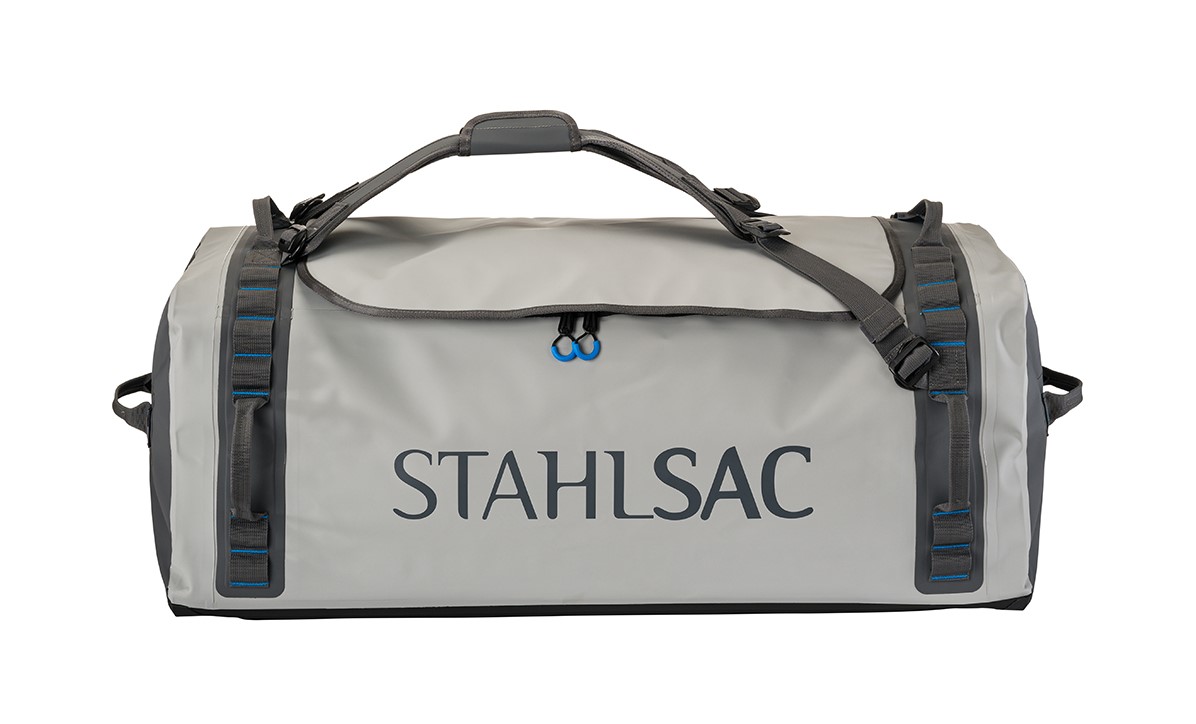
Stahlsac dive bags and travel luggage are built for our community of divers, surfers, kayakers and outdoor explorers who need bags that are constructed with durability, toughness, and 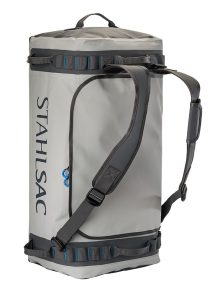 the highest quality the industry has ever seen. We were founded by one man determined to build better watersports and dive bags, and today, that mission is carried on by many. Adventure doesn’t just present itself; it requires discovery. When we design dive bags, we make sure they are tough enough for you to explore in all conditions—warm and cold, wet and dry—to the nearest and farthest reaches of the earth. And for those times you want to push the boundaries of adventure, Stahlsac dive bags make sure you can truly GO ANYWHERE.
the highest quality the industry has ever seen. We were founded by one man determined to build better watersports and dive bags, and today, that mission is carried on by many. Adventure doesn’t just present itself; it requires discovery. When we design dive bags, we make sure they are tough enough for you to explore in all conditions—warm and cold, wet and dry—to the nearest and farthest reaches of the earth. And for those times you want to push the boundaries of adventure, Stahlsac dive bags make sure you can truly GO ANYWHERE.
Abyss Duffels
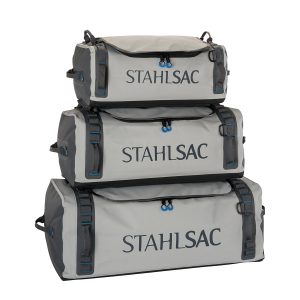 Made to be your partner-in-crime on every adventure, Stahlsac’s Abyss Duffels protects your gear from Mother Nature’s worst. Tough and 100% waterproof with double-TPU nylon material that shrugs off daily wear-and-tear, and RF-welded seams further boost the bag’s potential for lifelong exploring. Get Wet. Get Lost. Go Anywhere with Abyss.
Made to be your partner-in-crime on every adventure, Stahlsac’s Abyss Duffels protects your gear from Mother Nature’s worst. Tough and 100% waterproof with double-TPU nylon material that shrugs off daily wear-and-tear, and RF-welded seams further boost the bag’s potential for lifelong exploring. Get Wet. Get Lost. Go Anywhere with Abyss.
- A weatherproof duffel for trips, travel, and adventure
- Ultra-durable double-TPU nylon protects your gear
- Material repels water and keeps your equipment dry
- RF-welded seams are flush, tough, and waterproof
- Removable straps transform duffel into backpack
- Zippered internal stow compartments carry essentials
- External zippered flap is easy to open and close
- Welded external handles make transporting a breeze
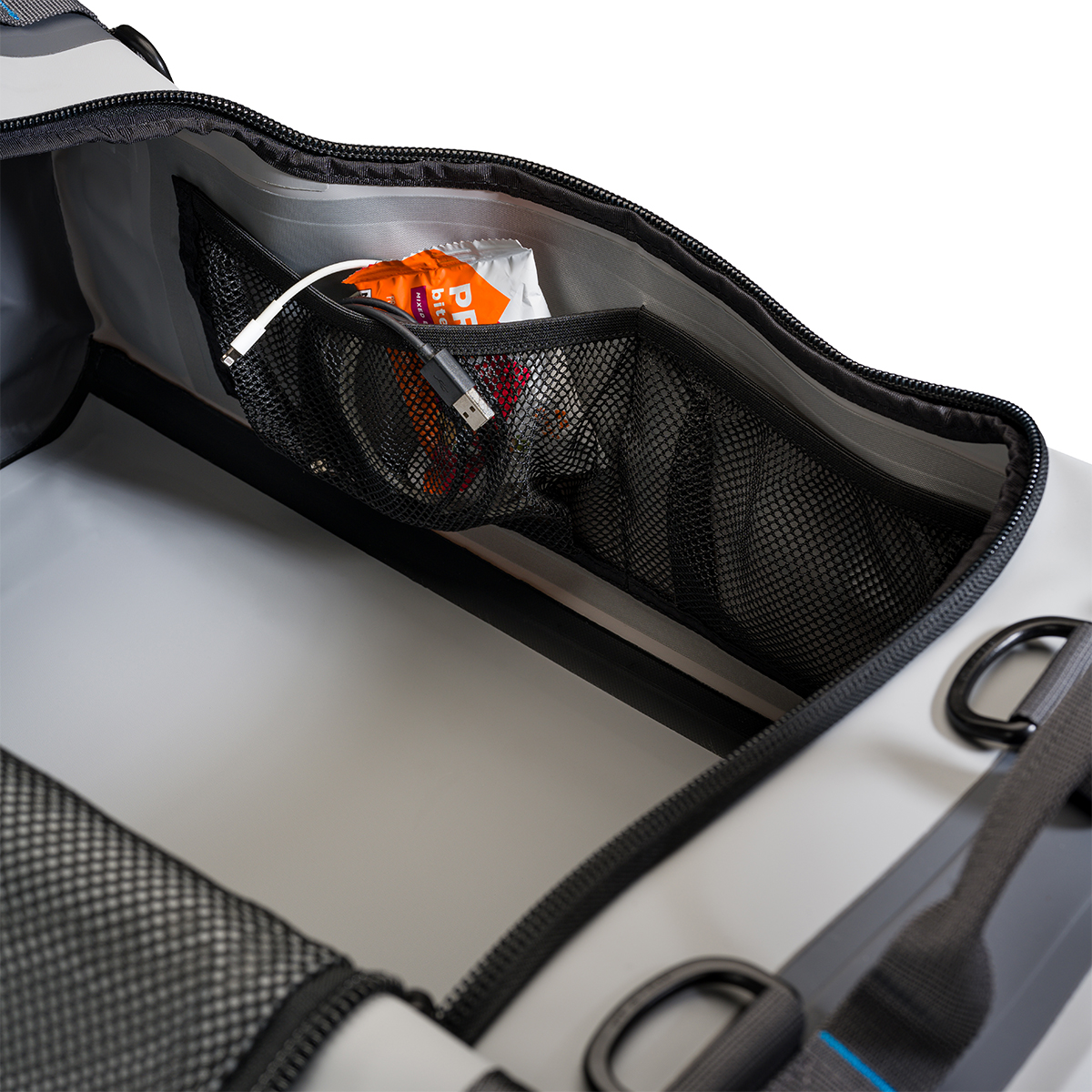
Panama Mesh Backpack
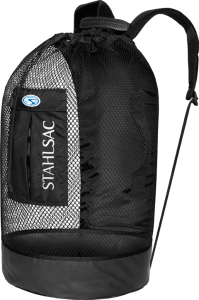 The most copied design in scuba diving, the Stahlsac Panama Mesh Backpack is the “original” design and features two high-density foam padded shoulder straps, extra durable polyester mesh, duffel bag handles and our unique zippered dry pocket inside that combines with a wet pocket outside. The bottom’s built from reinforced 18-gauge PVC nylon to combat the wear and tear of your active coastal lifestyle, and, as a bonus in every bag, we supply a 12″ x 12″ mesh drawstring satchel for extra stowing utility. Pack up your beach kit and go.
The most copied design in scuba diving, the Stahlsac Panama Mesh Backpack is the “original” design and features two high-density foam padded shoulder straps, extra durable polyester mesh, duffel bag handles and our unique zippered dry pocket inside that combines with a wet pocket outside. The bottom’s built from reinforced 18-gauge PVC nylon to combat the wear and tear of your active coastal lifestyle, and, as a bonus in every bag, we supply a 12″ x 12″ mesh drawstring satchel for extra stowing utility. Pack up your beach kit and go.
- Density foam padded shoulder straps
- Outside wet/dry pockets
- 2 Carry handles
- Tough, snag-resistant polyester mesh
- Reinforced PVC bottom
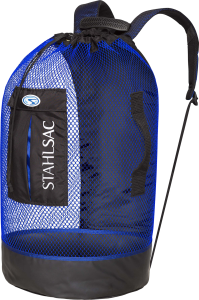
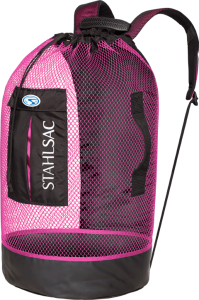
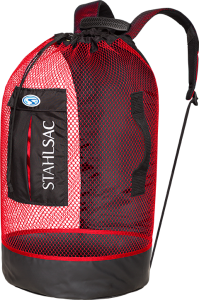
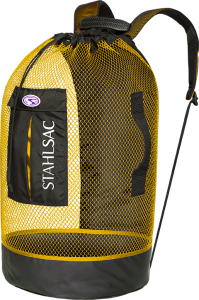
For more information about Stahlsac bags, visit www.stahlsac.com/dive-bags.
Sea & Sea is the home of Stahlsac and other leading diving brands in the UK.
Blogs
EXCLUSIVE: Jeff Goodman interviews Mark Spiers, CEO of New Scuba Diving Training Agency NovoScuba

In a video recorded exclusively for Scubaverse.com, Jeff Goodman interviews Mark Spiers, CEO of new scuba diving training agency NovoScuba.
Find out more about NovoScuba at www.novoscuba.com.
-

 News3 months ago
News3 months agoCapturing Critters in Lembeh Underwater Photography Workshop 2024: Event Roundup
-

 Marine Life & Conservation Blogs3 months ago
Marine Life & Conservation Blogs3 months agoCreature Feature: Swell Sharks
-

 Blogs2 months ago
Blogs2 months agoMurex Resorts: Passport to Paradise!
-

 Gear Reviews4 weeks ago
Gear Reviews4 weeks agoGEAR REVIEW – Revolutionising Diving Comfort: The Sharkskin T2 Chillproof Suit
-

 Blogs3 months ago
Blogs3 months agoDiver Discovering Whale Skeletons Beneath Ice Judged World’s Best Underwater Photograph
-

 News3 months ago
News3 months agoPADI Teams Up with Wellness Brand Neuro to Drive Ocean Change and Create a Blue State of Mind
-

 Gear Reviews3 months ago
Gear Reviews3 months agoGear Review: Oceanic+ Dive Housing for iPhone
-

 News3 months ago
News3 months agoWorld’s Best Underwater Photographers Unveil Breathtaking Images at World Shootout 2023





